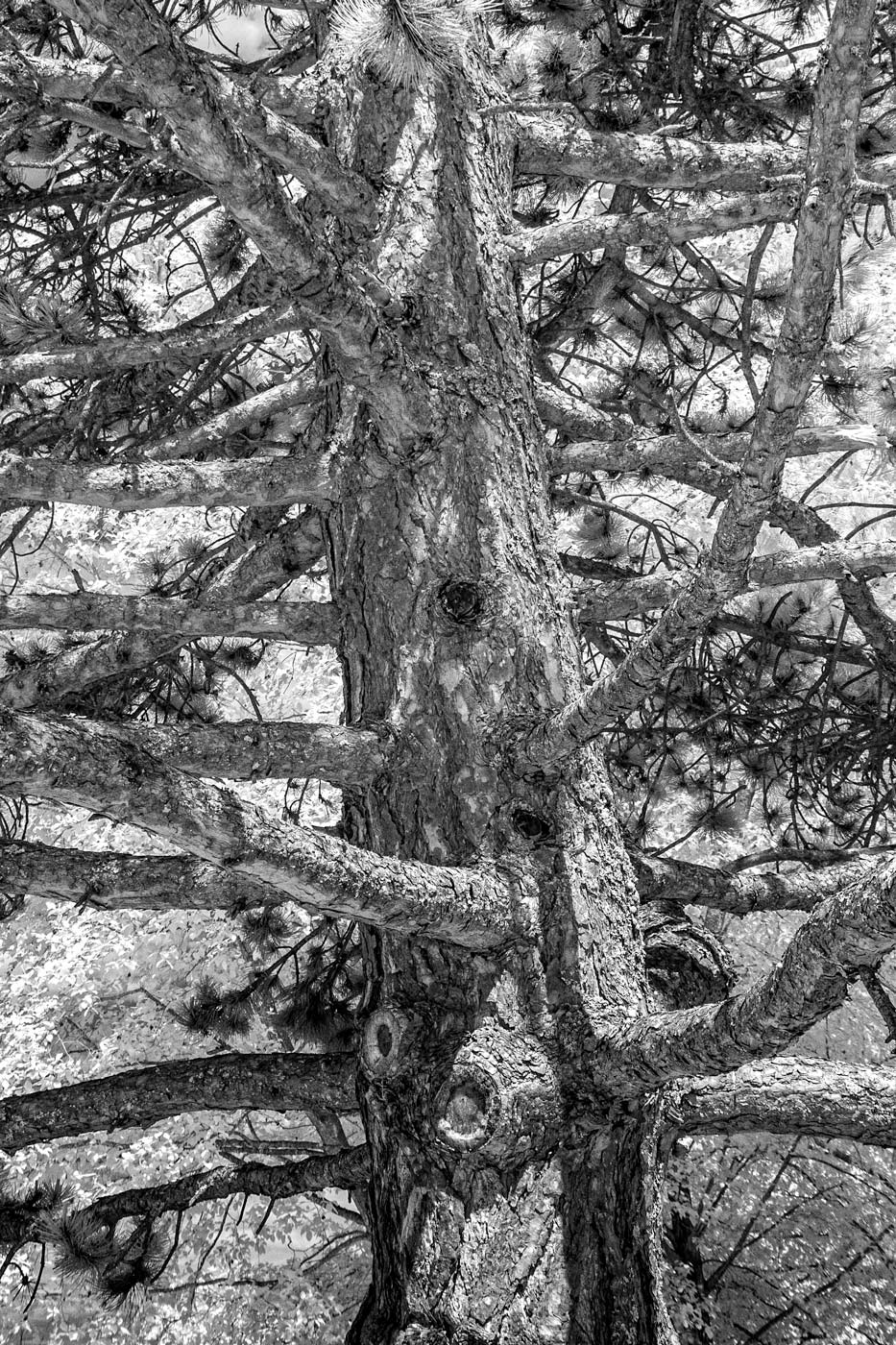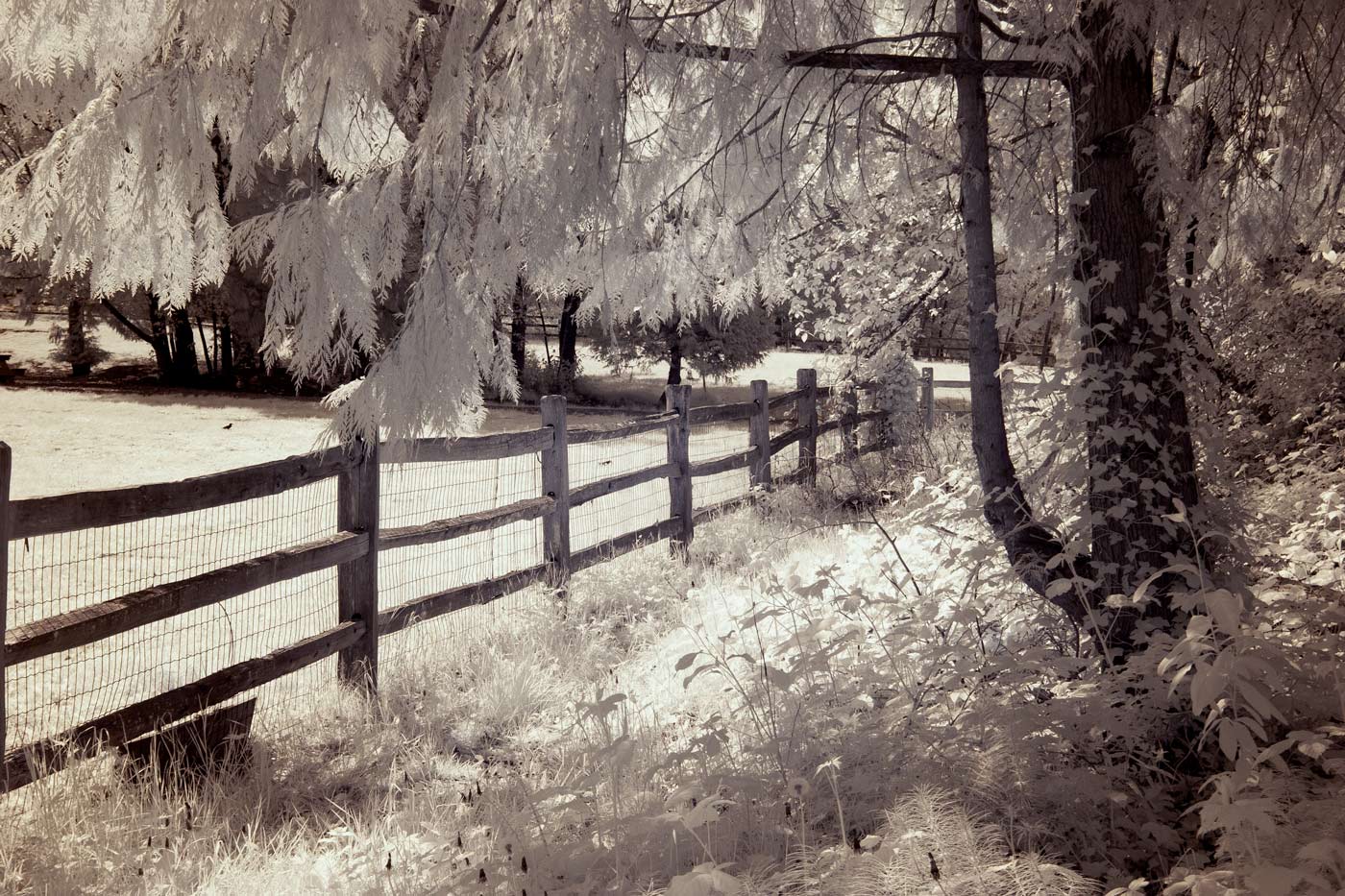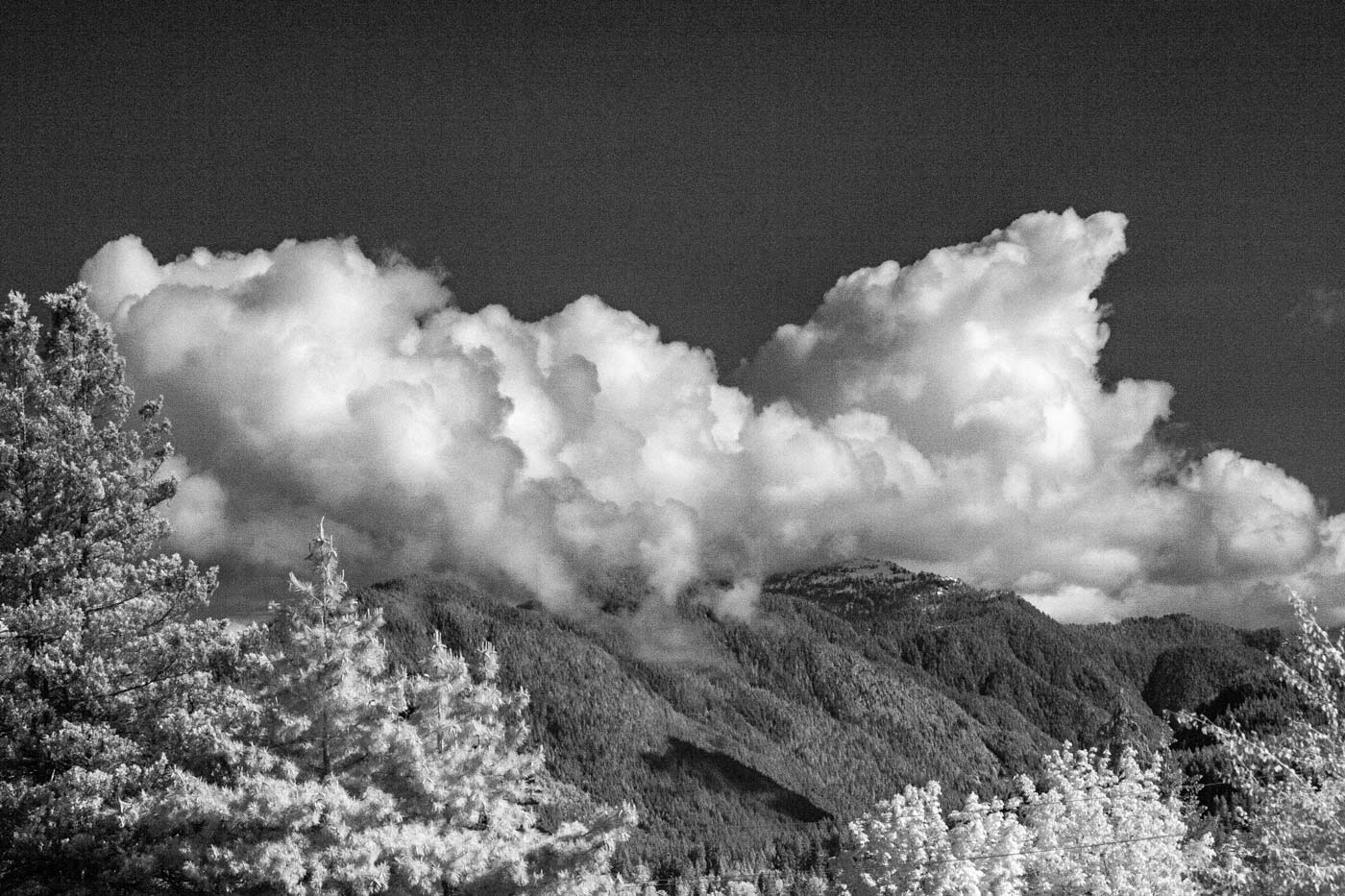My wife, Susan, and I walk often for the exercise. We live in an area with woodland trails, parks and beautiful scenery so our walks can be very pleasant. And on these walks I often (well, actually, always is more accurate) bring one of the cameras that is interesting me at the moment. There are so many cameras and so many lenses, and I want to use them all. It doesn’t make a lot of sense, I know, but I don’t think hobbies are supposed to.
In our local park near the house is this pine tree that I love to photograph whenever I am using a camera I have not used before. I love its rugged textures.
At a camera show a few years ago I bought a Canon 20D that had been converted to infra red photography and I have enjoyed that camera immensely. In pleasure I have recovered my investment many times over. It is only 8 megapixel but if they are good pixels you can create great images. In its day the 20D was considered a pretty hot camera.
On a recent walk I took my 20D with us and was taking pictures which I think was much to her annoyance. (The photos accompanying this post are from that walk.) This got Susan and I into a discussion of photography which we do often. And that got me to thinking about art critics and criticism generally. It came about in the following manner.
We came to a garden along the way that had beautiful flowers and a fence covered with lovely wisteria blossoms. She wanted a photo of some colored flowers and her with the wisteria. I said I could not really take color pictures with the camera I was carrying, and she then went on to say that I was wasting my

time with that camera. Apparently I should have been carrying a camera capable of full color and anything short of that was a waste of my time – and hers apparently.
Now, Susan is no friend of photography as art and has said many times to me that it cannot be art because it is just a photograph. I believe this to be a common view held by many and sometimes I wonder if that is right. You see, I have faith in photography and those of who operate on faith also have their periods of doubt.
But that aside, I value her criticism because it keeps me searching. I find that often her judgement of my pictures is accurate. She gives me an unvarnished instinctive reaction to a work without fear of hurting my feelings. For her life is so simple: how can the truth hurt your feelings? If I can get her approval of what I have produced I know that it will impress other audiences.
One of the nice things about IR photography is the ability of longer wavelengths to cut through mist and haze. I put my Canon 70-200mm f/2.8 on the 20D and took these two pictures from bedroom windows in our home before we went for our walk. You can see why I like my 20D IR.
And here is the value of a critic: they keep us examining our work and questioning it. It is so easy to enjoy what we do and accept it as sufficient. But that is dangerous because it can lead to complacency. We should want to always be relevant to our audience and to be up to date in our thinking and technique. Susan can be very negative about my photography but I keep coming back for her opinion because it gives me a window into a mindset that is foreign to me and yet is an important part of my audience.
Critics can go too far at times and become simply destructive. Criticism, to be effective and relevant must be wrapped in encouragement and helpfulness. It must be intended to educate. To simply condemn someone’s work as unworthy corrodes the creative instinct and stifles expression.
On our way home we walked back along Hastings Street where this image was taken. If you look into the distance down the street you can see the ability of this camera to cut through haze and render clear images. All IR images are rendered in B&W because the color spectrum is shifted so far into the red that colors become meaningless and wierd to the human eye.
This day was one of those times that I stood against my critic and continued to take pictures. If I had simply accepted her criticism and put the camera away I would have missed some lovely images. At times you simply have to have faith in yourself and your vision in spite of the responses of others to your work. Criticism may keep you sharp and alert but it must not control you. Your “art” is something that comes from within you and to pursue it may often mean forging ahead. As I recall, it has something to do with damning torpedoes.
And about that wisteria Susan wanted in a picture, here is my favorite critic wrapped in flowers. You see, I carry a cell phone!








